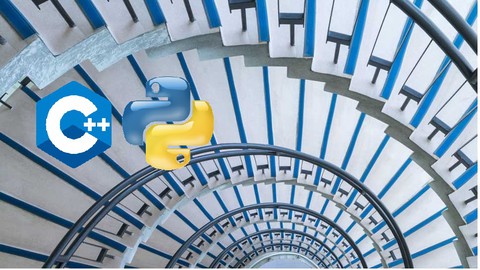
Learn All About Recursion in Python and C++
What you’ll learn
-
Recursion concepts in Python and C++
-
Understand how recursion works
-
Hands-on experience of coding exercises
-
Iterative to Recursive conversions
-
How to write recursive functions
-
Difference between Iteration and Recursion
-
Smart Coding
Requirements
-
Basic Mathematics
-
Basic Logic Skills
-
Basic knowledge of C++ or Python
Description
Question : What is the best way to learn Recursion ?
Answer : Practice, a lot of practice.
We have added all kinds of coding exercises for recursion which are frequently asked in a job interview.
Recursion is a powerful programming technique. A function that calls itself recursively and saves programming effort and avoids repetition.
– This course explains the basic theory and comprehensive practice of recursion.
– At the end of the course, students will be able to solve problems from basic to expert levels and guess what ? We are always there to help you for each exercise 24/7.
– The courses includes numerous short sample programs to show how recursion works.
– You will be provided with a complete environment to solve Python and C++ Coding Exercises with their solutions (Both iterative and recursive).
– At the end of the course students will solve coding exercises on udemy inbuilt IDE platform to master the technique of smart programming.
– There is NO REQUIREMENT of any cross-platform (Visual Studio, CodeBlocks etc.). You just need a desktop/laptop and start your practice on Udemy inbuilt IDE without any software.
– Which programming languages are often seen as a badge of honor among software developers? Python and C++
– Which programming language can you learn that when added to your resume, will often get you a job interview? Python and C++
Why not get started today?
Click the Signup button to sign up for the course!
Who this course is for:
- Python and C++ students having difficulty in understanding recursion
- Students will be able to think recursively
- Anyone who needs to extend their knowledge of algorithms and data structures






